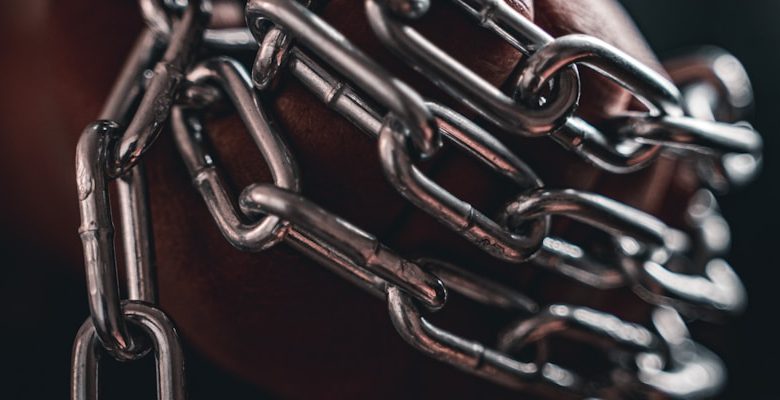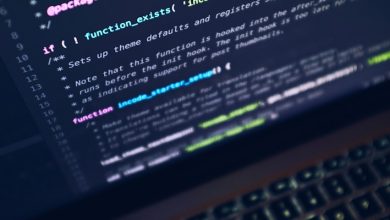The Role of Oracles in Connecting Blockchain with Real-World Data

- Understanding the concept of oracles in blockchain technology
- The importance of accurate real-world data in blockchain applications
- Challenges faced in connecting blockchain with real-world data
- How oracles bridge the gap between blockchain and real-world information
- Various types of oracles used in blockchain ecosystems
- Future prospects of oracles in enhancing blockchain functionality
Understanding the concept of oracles in blockchain technology
Oracles play a crucial role in blockchain technology by acting as bridges between blockchain smart contracts and real-world data sources. In simple terms, oracles are trusted entities that provide external data to blockchain networks, enabling them to execute smart contracts based on real-time information. This ensures that blockchain applications can interact with the outside world and make decisions based on accurate data.
Understanding the concept of oracles is essential for grasping how blockchain technology can be utilized in various industries. Oracles are responsible for fetching data from off-chain sources, verifying its authenticity, and delivering it to smart contracts on the blockchain. This process is crucial for applications such as decentralized finance (DeFi), supply chain management, and insurance, where real-time data is required for secure and efficient operations.
By leveraging oracles, blockchain networks can access information such as market prices, weather conditions, sports scores, and more, allowing smart contracts to trigger actions automatically based on predefined conditions. This capability expands the functionality of blockchain technology beyond simple transactions to more complex use cases that require real-world data inputs.
The importance of accurate real-world data in blockchain applications
Accurate real-world data is crucial for the success of blockchain applications. It serves as the foundation upon which smart contracts and decentralized applications operate. Without reliable data from external sources, blockchain systems are at risk of producing incorrect or fraudulent results. This emphasizes the importance of integrating oracles into blockchain networks to ensure the accuracy and integrity of real-world data.
Challenges faced in connecting blockchain with real-world data
There are several challenges that must be addressed when connecting blockchain with real-world data. These obstacles can complicate the process and hinder the accuracy and reliability of the information being fed into the blockchain. Some of the key challenges include:
- Accuracy: Ensuring that the data being inputted into the blockchain is accurate and verifiable is crucial. Without accurate data, the integrity of the blockchain is compromised.
- Security: Protecting the data from tampering or manipulation is essential to maintaining the trustworthiness of the blockchain. Security measures must be put in place to prevent unauthorized access.
- Speed: Real-world data is constantly changing, so it is important that the process of updating the data on the blockchain is fast and efficient. Delays in updating the data can lead to outdated information.
- Cost: Connecting blockchain with real-world data can be costly, especially when considering the infrastructure and technology needed to ensure a seamless integration. Finding cost-effective solutions is key.
- Interoperability: Ensuring that different systems and platforms can communicate and share data effectively is essential for the successful integration of blockchain with real-world data.
Addressing these challenges is crucial for the widespread adoption and implementation of blockchain technology in various industries. By overcoming these obstacles, the potential for blockchain to revolutionize the way we interact with and utilize real-world data can be fully realized.
How oracles bridge the gap between blockchain and real-world information
Oracles play a crucial role in bridging the gap between blockchain technology and real-world information. They act as intermediaries that fetch data from external sources and feed it into smart contracts running on the blockchain. This enables blockchain applications to access and interact with real-world data, such as market prices, weather conditions, or sports results.
By leveraging oracles, blockchain-based systems can make use of external information to trigger actions, validate transactions, or execute smart contracts based on real-world events. This functionality opens up a world of possibilities for decentralized applications, allowing them to operate in a more dynamic and responsive manner.
Oracles come in various forms, ranging from simple data feeds to more complex systems that verify and validate information from multiple sources. They act as trusted sources of information, ensuring the accuracy and reliability of the data being used by blockchain applications.
Overall, oracles are essential components that enable blockchain technology to extend its reach beyond the confines of the digital realm and tap into the wealth of real-world data available. By bridging this gap, oracles empower blockchain applications to create innovative solutions that can revolutionize industries and transform the way we interact with information and services.
Various types of oracles used in blockchain ecosystems
Various types of oracles play a crucial role in connecting blockchain networks with real-world data, ensuring the accuracy and reliability of information. These oracles act as bridges between on-chain smart contracts and off-chain data sources, enabling decentralized applications to access external data. Here are some of the most commonly used types of oracles in blockchain ecosystems:
- 1. Software Oracles: These are oracles that rely on software to retrieve and verify external data from online sources such as APIs, websites, and databases. They are programmatically designed to fetch specific data and deliver it to smart contracts on the blockchain.
- 2. Hardware Oracles: Hardware oracles use physical devices to collect real-world information and transmit it to blockchain networks. These devices are equipped with sensors and IoT technology to capture data such as temperature, location, or even financial transactions.
- 3. Consensus Oracles: Consensus oracles gather data from multiple sources and aggregate them to provide a more accurate and reliable data feed to smart contracts. By cross-referencing information from different providers, consensus oracles help mitigate the risks of data manipulation or inaccuracies.
- 4. Inbound Oracles: Inbound oracles facilitate the flow of external data into blockchain networks, ensuring that smart contracts receive timely updates and relevant information. They are essential for applications that require real-time data to trigger automated actions or decisions.
- 5. Outbound Oracles: Outbound oracles enable blockchain networks to interact with external systems and trigger events based on on-chain conditions. They act as conduits for blockchain data to influence off-chain processes, creating bidirectional communication channels between decentralized applications and traditional systems.
Future prospects of oracles in enhancing blockchain functionality
Looking ahead, the future prospects of oracles in enhancing blockchain functionality are promising. As blockchain technology continues to evolve, the need for oracles to securely connect with real-world data will only increase. Oracles play a crucial role in bridging the gap between blockchain networks and external sources of information. By providing reliable data feeds, oracles enable smart contracts to execute based on real-time information, opening up a world of possibilities for decentralized applications.
One of the key benefits of incorporating oracles into blockchain systems is the ability to access off-chain data in a trustless manner. This means that smart contracts can interact with external data sources without compromising the integrity and security of the blockchain network. As a result, oracles have the potential to revolutionize various industries by enabling new use cases that require real-world data to function effectively.
Furthermore, the integration of oracles can enhance the overall efficiency and scalability of blockchain networks. By automating the process of retrieving and verifying external data, oracles reduce the need for manual intervention, streamlining operations and minimizing the risk of human error. This can lead to faster transaction speeds, lower costs, and improved user experiences, making blockchain technology more accessible and user-friendly.



